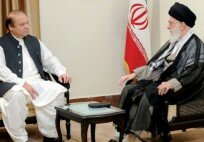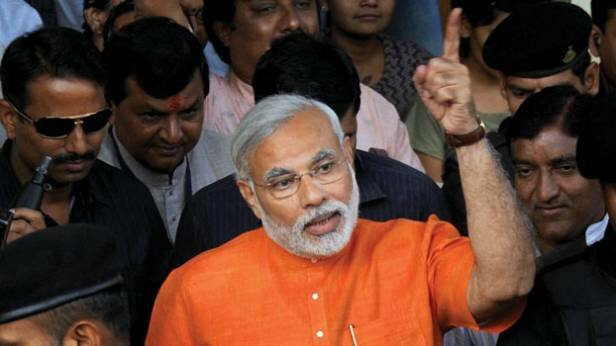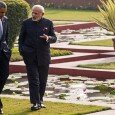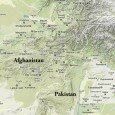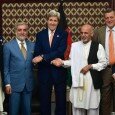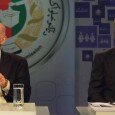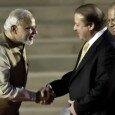Caesar Mandal :
He could be a monk or a successful entrepreneur but he is a politician or a ‘political entrepreneur’ who loves to define himself both Hindu and a nationalist. Narendra Damodardas Modi is the symbol of contradiction and controversy in sub-continental politics.
The 62-year-old man knows his contradictions and uses this aspectas a unique selling proposition in the market of politics, developing his own brand. Now, he is making a bid to “modi-fy” India as the most prospective contender of the premier position of the largest democracy.
From a roadside tea stall owner’s son at a non descriptive tiny town Vadnagar in western state Gujarat, Narendra Modi stepped into the national politics as a face of fierce Gujarat riot in 2002 and a poster boy of Hindutva. As chief minister, he carries the blame for ‘masterminding’ minority bloodshed, who witnessed the wild faces of Hindutva.
The wounds of riot could be fatal for Modi’s political life but party’s second in command LK Advani’s blessings helped him survive. Advani himself was an icon of polarized politics and propelled Bharatiya Janata Party into the mainstream from a marginalized position.
But Advani never could be the face of the government, where he always lagged behind the liberal face of Atal Bihari Vajpayee. For Advani, Modi was a flag bearer of his own brand of polarized politics and he paved way for Modi to step in national level politics.
A decade ago, when Modi’s political fate was at stake, eminent journalist and former editor of two biggest economic dailies, Swaminathan S Anklesariya Aiyar saw him as a future prime minister. In his column he wrote, “I see Narendra Modi as a future Prime Minister of India, possibly even the next one. The prospect does not fill me with joy, but analysis is not about joyfulness. Just look around for young politicians who can move the masses, who can be more than regional leaders and make a national impact. I see no new faces, in or outside BJP, to match Modi.” Aiyer predicted his rise years ago, something what perhaps his mentor Adbani could not realize back then.
Advani realized this only when Modi had already superseded him in the national arena. So, Advani played his last card to resist Modi by resigning from all organizational posts when Modi was selected as the chief election campaigner of BJP in 2014 polls. When Congress is all set to project former Prime Minister Rajib Gandhi’s son Rahul for the premier position, then Modi’s selection as chief campaigner is an unofficial projection as would be Prime Minister.
In the words of senior politician and eminent lawyer Ram Jethmalani, “No politician in independent India has been demonized in such a relentless manner as Narendra Modi, and no politician has withstood it with as much resilience and courage.” It is no doubt a truth, because Modi used his Hindu poster boy image and controversy running behind him to develop himself as an icon of polarized politics with a blend of a workaholic administrator. Modi, himself is now a brand, a style statement, a popular fodder of all television channels competing with the bollywood stars or cricket deities.
A Common Man’s authority
Brand Modi
Journalist Nilanjan Mukhopadhyay, who has authored a biography of Modi, describes him as an authoritarian politician, a person who orders Modi Kurta with hand tailored button holes but prefer western attire at home, with a weakness for designer Montblanc. A tech savvy Modi maintains his own website, tweets regularly and one among the first to posses digital diarie. Modi, however, introduces himself as CM(Common Man) of Gujarat.
With three consecutive wins of BJP in Gujarat assembly under his leadership, Modi has enough proof to claim that his brand is highly sellable. Brand Modi survives with the contradiction between Hindutva, authority and a good administrator.
Between 2005 to 2011 when the national growth rate of India was 8.64 percent, then Modi-fied Gujarat’s rate of growth was 10.25 percent, a statistical index of Modi governance. Leaving behind the stigma of conflict, Modi now projects his state as Vibrant Gujarat — a model of development and good governance. But the Human Development Index shows Gujarat as worst in hunger and nutrition among the industrial high per capita income states. An index pointing to a partial development, where a large section remains deprived.
For his alleged role behind the minority genocide in Gujarat, Modi remained banned in Europe and US. United States refused to provide Modi a visa. But the same power bloc is now taking initiative to ease relationship with him after Modi’s Gujarat turned into a favourite destination for the investors from Japan, China and Israel. Diplomats hinted that Modi’s venture to promote an alternate power block is carrying the indication of his foreign policy if he succeeds to achieve the Prime Minister position.
Jewish bond and
Indo-Pak relation
Foreign policy experts who have studied Modi for past few years have reasons to believe that Obama would have little chance to describe Modi as one of the five world leaders whom he considers as closest friends, like present Indian PM Monmohan Singh. Because Modi’s authoritarian and nationalist mindset can hardly allow him to forget Washington’s isolationist politics towards him. Interactions between a Prime Minister Modi and President Obama would likely to be confined to business. But as a PM, more bonding with Israel is much expected.
In 1992, diplomatic ties with Israel were established in Congress regime, but it blossomed in between 1999-2004 when BJP was in government. Diplomats feel the future relations with Israel would be more ideological than strategic.
Traditionally Indian politicians avoid getting close to Tel Aviv, fearing that the act could alienate huge Muslim population. But Modi’s love for polarized politics suggest that he might be the first Indian premier to visit the Jewish state to set up an united front to take on ‘ugly faces of Islamic terrorism’.
Both bureaucrats and analysts have a strong belief that Modi’s foreign policy will be aggressive and muscular, which may worsen the improving bilateral relations between India-Pakistan. But another section suggests that after the emphatic return of Nawaj Sharif, Modi’s ‘aggression’ against terrorism may bring both states on a new platform to negotiate over the long standing controversies and take bold steps towards a broader peace deal. In the earlier in BJP regime, even after a brief conflict (Kargil war), the BJP led government took positive initiatives to improve relations with Pakistan and these initiatives continued under the present Congress government.
Modi, a double edged sword
Brand Modi and his authority are like a double edged sword for his mentors. The Rastriya Swayam Sevak Sangha camp — the mother outfit of BJP —put its weight behind Modi with a specific strategy: to boost up the morale of the BJP workers and to unite the Hindu vote bank under Modi’s Hindutva flag.
At the same time Modi,in a bid to project him as a flag bearer of development and an icon of next generation leadership, fighting against corruption, is focusing on the young voters of the country. Long before his nomination as chief election campaigner, Modi targeted the urban middle and upper class students by taking up the cause against corruption — the main issue for the urban population.
But Modi-fication doesn’t fit with the ally parties of BJP, who claim themselves ‘secular’. Fearing the erosion of minority vote bank, BJP’s old ally Bihar chief Minister Nitish Kumar already has severed his links with BJP led National Democratic Alliance. Similarly other regional players — Nabin Pattanayak, Bengal chief Minister Mamata Banerjee, AIDMK chief Jayalalitha, Hindi belt leaders like Mayabati and Mulayam Singh Yadav — are now looking for a third front to replace both BJP and Congress.
In past two decades regional players always remain a major stake holder in national politics. Modi can boost the morale of the party workers and can even push the party as a single largest but he might be unable to bring allies to form a coalition government, which likely to be unavoidable in present Indian politics, say experts.
Former Loksabha speaker Purna A Sangma admits that Modi has the Prime Ministerial material but he did not hasten to add: “He has popular support in Hindi speaking belt but would have to test his acceptance in non-Hindi speaking belts, especially in south India.”
BJP has a traditional base in north Indian Hindi belt but will have to depend on regional players in other non-Hindi belts.
Party insiders have hinted that Modi’s fate could be like his previous mentor L K Advani, who single handedly pulled up BJP as the contender to form government but the burden of coalition never allowed him to be the Prime Minister.
The writer is a journalist based in Kolkata, India.





























































